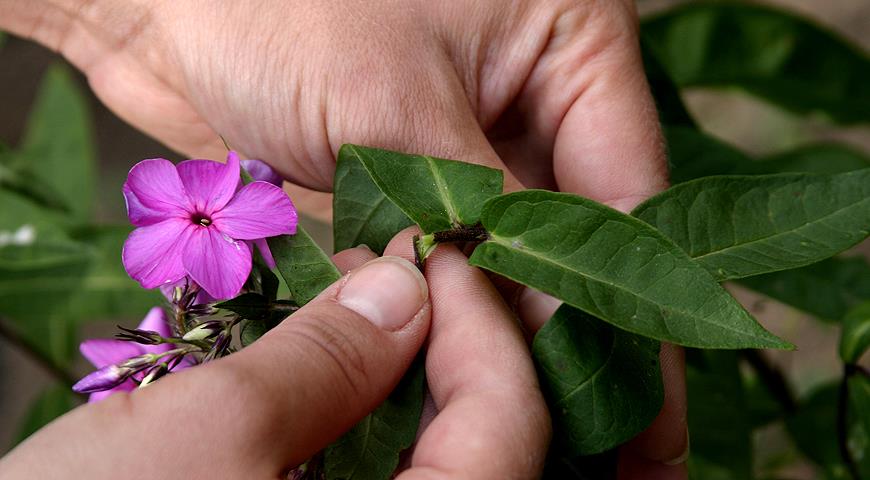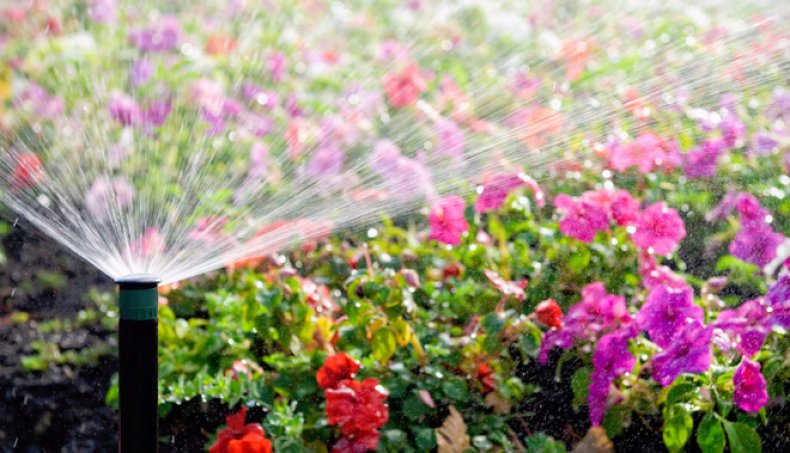Content:
There are many types and varieties of phlox. They differ from each other in flowering period, appearance and shape. From several correctly selected varieties, you can arrange a flower bed that will bloom from April to early October. This garden plant can be planted in open ground in spring and autumn.
Phlox: planting and care in the open field
They are easy to grow, and any soil is suitable for them. If the soil in the flower bed is fertilized with manure or any other organic matter before planting, the flowers will grow and bloom much better. Phloxes need good watering to bloom, especially in late spring and early summer when flower buds are forming in the plant. Phloxes can be transplanted from place to place even during flowering, for this it is enough to dig a flower together with a lump of earth.
Reproduction of phlox
You can propagate phlox:
- dividing the bush;
- cuttings;
- root suckers;
- layering;
- seeds.
Reproduction by dividing the bush is the simplest and at the same time common method. The overgrown bush must be divided into several parts. If you leave the plant in its old place, its deciduous mass and the number of stems will greatly increase, and there will be fewer flowers.
You can plant flower bushes in spring, summer and autumn. How to plant phlox by dividing a bush: the root system is divided and dug out together with the soil tuber so that each separated part has:
- 2-3 full-fledged stems with leaves;
- several young shoots;
- 3-4 growth buds;
- roots.
Thick stems are shortened to 10-12 cm. In autumn, instead of young shoots, there may be small shoots, that's enough.
The pieces of roots remaining after transplanting plants are taken from the soil, divided into pieces of 6-7 cm and planted in a new place. Phlox planted in this way are capable of blooming the next season.
Reproduction by layering is done as follows:
- The crown of the stems is pinched before flowering and bent to the ground.
- The area of the stem, which is in contact with the soil, is spud with a nutrient mixture of burnt-out compost and peat.
- Closer to September, a self-growing plant is formed from the allotted stem. If desired, it can be transplanted to another part of the garden.
Caring for phlox is easy enough. To do this, you need them:
- water in a timely manner,
- cut off faded peduncles;
- feed;
- to seat.
All about the rules of landing and preparation for it
Phlox naturally grow close to water bodies - where there is enough moisture in the soil for them. You can grow these flowers in a sunny garden bed and in partial shade. Depending on the climatic conditions of the region and the planned landscape design, the gardener himself chooses where to plant phlox, in the shade or in the sun.
In hot and arid regions, phlox areas are more suitable for areas shaded by bushes and fruit trees.
Bushes growing in partial shade stretch up strongly. Flowers that have been planted in a well-lit garden have short and well-developed stems.
In the northern regions with short summers, phloxes are planted in the most sunny areas of the garden. For these areas, you need to choose varieties:
- with an early onset of flowering;
- with good frost resistance.
Phloxes are planted close only to those tree-like, in which the roots go deeper, and not close to the surface. Bad neighbors for these colors:
- lilac,
- cherry,
- plum,
- poplar,
- spruce,
- willow,
- Birch tree.
It is unacceptable to grow phlox in a draft and where the soil dries quickly. For them, they choose a corner of the garden where they can often be watered. Phloxes are equally suitable for alkaline and acidic soil, however, they require regular feeding.
New phlox seedlings are planted at a distance of 0.5 m from each other. The root collar should not be placed very deeply into the hole. It is necessary to sprinkle it with a layer of soil of 2-3 cm.For undersized curb varieties, a distance of about 25-30 cm is left between the seedlings.
It is believed that phlox are undemanding to the composition of the soil. They grow even on poor soil. Either way, these plants respond very well to growth-promoting top dressing.
The flowerbeds begin to be prepared in the fall. Three steps are performed in stages:
- plant residues (dried leaves and stems) are removed from the site;
- nutrient additives are added to the soil;
- dug up the bed.
For each square meter of usable area, make:
- 2 buckets of compost or a bucket of manure;
- 250 g of ash;
- 1 tbsp. spoon of saltpeter.
Before planting flowers, add 10 kg of sand per 1 square meter to the clay soil. meter of usable area, and for soil with a large amount of sand, you need to add 1 bucket of powdered clay. Such additives will help plant roots to survive the summer heat.
Novice gardeners are interested in what kind of soil do phloxes like? These flowers feel best on medium loamy and fertile soils. Phlox will grow well if it is regularly loosened and watered around the bushes.
How to plant a crop correctly
Summer
Reproduction and planting of phlox in the summer is carried out by dividing the bush or by green cuttings.

Reproduction and planting of phlox in the summer is carried out by dividing the bush or by green cuttings
From the beginning of June to July, before flowering, the green stem, which has not yet had time to cover with a crust, is cut into several parts. Each piece of the shoot should contain:
- 2-3 leaves;
- 1-2 internodes.
Cuttings are planted in the ground for rooting. In order for them to begin better and faster, the soil in the garden bed is sprinkled with a layer of sand 2-3 cm thick.
To prevent young shoots from drying out with hot sunlight, wire arches are installed above them, on which the covering material is strengthened. The cuttings are dug into the ground to a depth of 3 cm.After about a month, the plants completely take root, after which they can be transplanted into a flower bed.
In summer, phloxes are transplanted with a lump of soil, after which they are often watered. To speed up rooting, all inflorescences from the plant are removed.
In the spring
In spring, phlox can be planted on flower beds from early to mid-May. When planted in spring, they bloom 2 weeks later.
In autumn
You can divide the bushes and replant from August to the end of September. Later, it is not worth planting flowers in a new place, they need time in order to have time to start. The bushes planted between August and September will bloom on time next summer.
The upper part of the plant's root system should be covered with a 3-5 cm layer of soil.If the roots are very close to the soil surface, the bush will burn out in the summer heat, and in winter it will die from frost.
Phloxes are perennial and annual. Annuals are sown in the soil in late autumn. During the winter, they undergo natural selection and in the spring they sprout only high-quality seeds. Can be planted in seedlings. To do this, they are sown in seedling boxes at the end of February and kept indoors, and planted in the beds after the soil has warmed up enough.
Tips from experienced florists and gardeners
What do phloxes like and how to properly care for them? Experienced growers advise the following:
- Store the bushes dug from the ground dug in the garden until planting. For this, the roots of the plant are sprinkled with a layer of wet sand or soil.
- Watering young seedlings and root cuttings in the evening or morning.
- Add a layer of nutritious soil mixture to the flower bed if, after rain and watering, the soil for phlox has settled around the planted bushes. It is unacceptable for the root to protrude outward, this leads to its drying out and the death of the plant.
- Water the seedlings for two weeks. This amount of time for newly planted phloxes is spent on rooting.
- Apply top dressing regularly if it is not possible to transfer the bush to a new place.
- Feed at least 4-5 times per season.
- Divide and plant bushes. Otherwise, they will actively grow and grow deciduous mass to the detriment of flowering.
- Alternate nitrogen-containing mineral complexes with organic matter;
- Water the plants so that the moisture reaches the roots at a depth of 20-30 cm. Water consumption for such irrigation is 15-20 liters per 1 square meter. meter.
- Cover the soil around the bushes with mulch. For this purpose, cut grass, straw, mulch film are suitable.
- For the winter, cut off the stems to 10-12 cm. Cover the roots with mulch from compost, cut grass, peat.
- Spray flower beds with protective agents, the action of which is aimed at preventing the occurrence of an infectious disease and the appearance of harmful insects. Chemicals and biologics are available at a specialty store.
- In late autumn, fertilize the soil with saltpeter and organic fertilizers. The accumulated nutrients will help the cultivated plants to winter.
Gardeners consider phlox to be one of the most unpretentious flowers. Even a beginner can grow this garden culture. They sprout and bloom even on poor soils, in the shade. If the bushes are watered and fed in a timely manner, they will respond to proper care with active and long flowering. How to use this beautiful bush within a particular landscape is a matter of taste.















